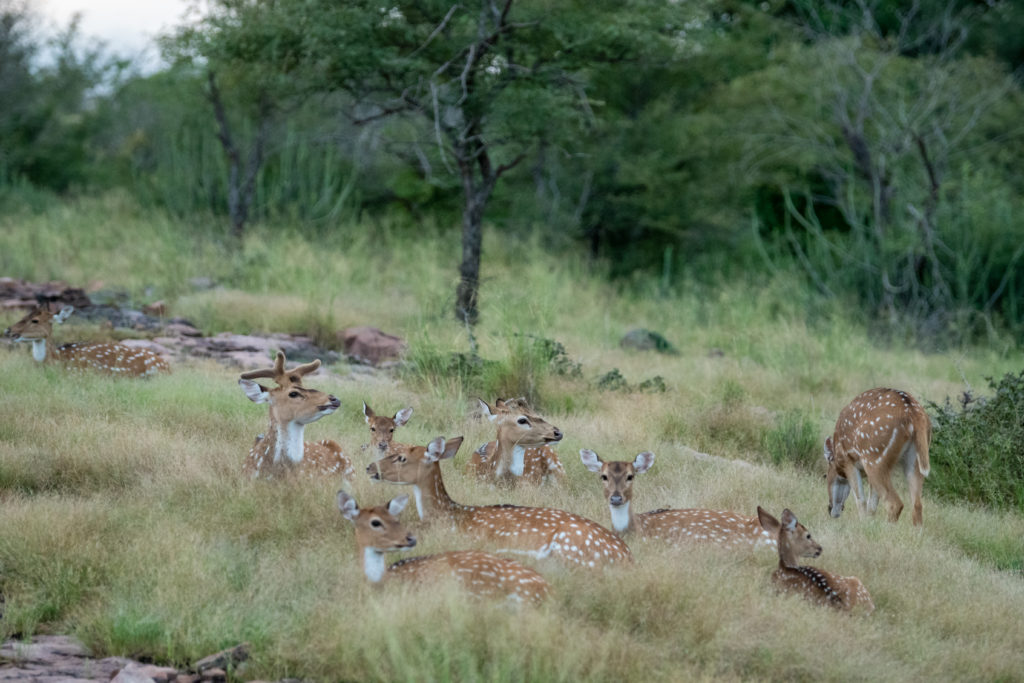Exotics
Axis Deer Range in Texas
In 1988 they were noted as having self-sustaining populations in 27 counties within Central and South Texas. They have since expanded into 92 Counties and have a current estimated population of up to 125,000 animals according to Exotic Wildlife Association. The highest populations of Axis Deer in Texas are now centered around the Edwards Plateau.
This is also the area of the State with the highest populations of White-tailed Deer.
It is surprisingly difficult to find any data documenting the spread of Axis deer over time or any recent scientific data that would indicate an accurate population estimate.
There are several high-quality institutions that offer anecdotal references to Axis populations. For example, according to Texas Tech University, Axis deer are now the most abundant exotic ungulate in Texas.
Anyone driving through the Texas Hill Country can believe in their abundance. Although Axis are still no where near as common as White-tailed deer overall, it is still a common occurrence to see them crossing roads and grazing/browsing along tree lines.

Small-Group of Axis in the Texas Hill Country The Texas Hill Country and Edwards Plateau host a similar (albeit slightly cooler) climate as their native habitat and provide a similar combination of cover. The area also provides ample nutrition through grasses, forbs, and browse. This combination, along with their continued introduction into new areas by ranch stocking has created a perfect scenario for a rise in population.
Fallow Deer Range in Texas
The fallow deer (Dama dama) is a member of the Cervidae family, which includes deer, elk, reindeer, and related species. The male fallow deer is known for its large, shovel-shaped, palmate antlers, and a common color variation includes a light brown coat covered with white spots.
However, fallow deer have an extensive range and there is quite a bit of genetic variation in the population as a whole. This leads to several other prominent colorations, including Menil (lighter, more distinct spots), Melanistic (very dark, no spots), and Leucistic (a coat of almost pure white, with a dark nose and eyes). These color variations are tied to a number of different genes, so their influence on survival and reproduction depends entirely on the environment each fallow deer lives in.
Continue to read more from Biology Dictionary
Donec non enim in turpis pulvinar facilisis. Ut felis. Praesent dapibus, neque id cursus faucibus, tortor neque egestas augue, eu vulputate magna eros eu erat. Aliquam erat volutpat. Nam dui mi, tincidunt quis, accumsan porttitor, facilisis luctus, metus





